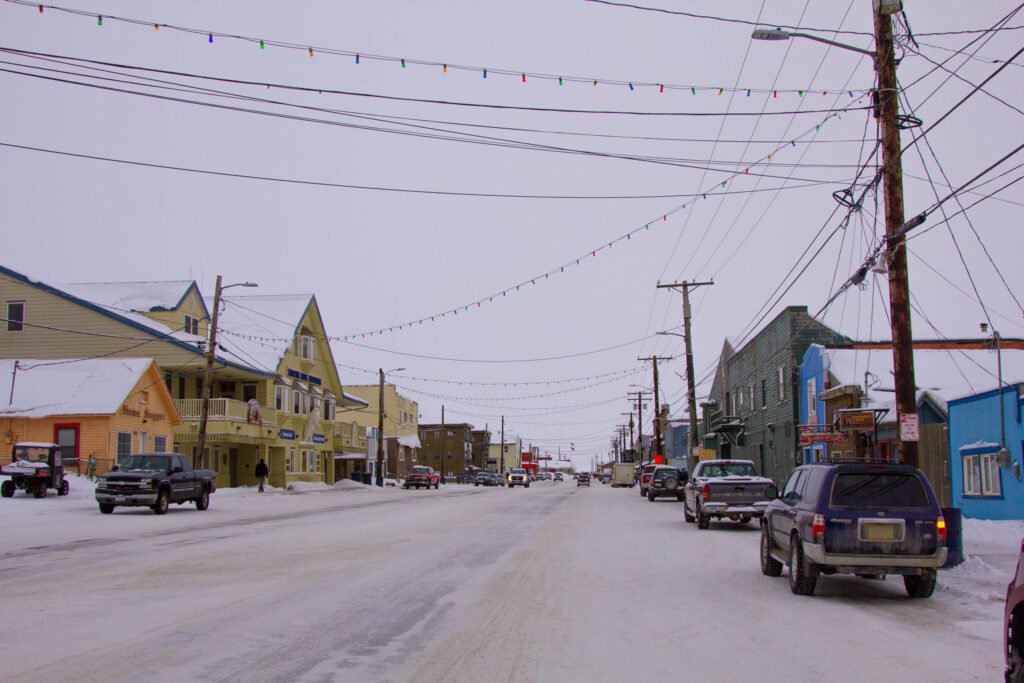Changes occurring in Arctic waters — including diminishing sea ice and warming seas — have brought up many questions about how marine life will respond. A team of scientists departing from Nome today hopes to answer at least a few of those.
Katrin Iken, professor of marine biology at the University of Alaska Fairbanks, is leading the team. She and her colleagues will venture north on a 23-day research cruise to investigate marine biodiversity in the Chukchi Sea.
During a talk Wednesday at the UAF Northwest Campus, Iken showed a diagram of information collected thus far about a range of Arctic marine species. Red dots meant the species were decreasing in population; green showed they were increasing. Grey dots meant there was too little data.
“I find it mind-boggling that, after how many years of research, we still have so many gray dots, where we just don’t have enough information,” Iken said.
Iken’s project, which launched in 2015, is called the Arctic Marine Biodiversity Observation Network, or AMBON. Network is the key word. AMBON partners with other university and federal investigators, the National Science Foundation, and even Shell, to share data and create a fuller picture of the Arctic marine ecosystem.
One goal is to develop a long-term plan for measuring biodiversity by collaborating with other researchers around the country. But Iken says that can be a difficult task.
“We have a bit of a hard time figuring out what is our common ground between people in Florida looking at coral reefs and people in Florida looking at kelp forests and us looking at an Arctic ocean,” she said.
The voyage itself will be more familiar territory — the team did it before, in 2015. They gathered data about organisms all the way from tiny bacteria to giant whales. This year, they have a similar plan. More data, collected both during the cruise and from a mooring that has been taking readings over the past two years, will allow them to identify what is changing, and why.
Vessels like the luxury cruise liner Crystal Serenity, which will visit Nome this month before voyaging through the Northwest Passage, can pose significant threats to marine ecosystems. Iken says their collected data is important as diminished sea ice allows for increased traffic in the Arctic.
“Boats are known to be very strong vectors of bringing things with them. Many of them take on ballast water somewhere else, and then, they go somewhere else, and they need to dump them. So you’re basically taking parcels of water from some place and you deliver them somewhere else, and so these are not waters that are pure and everything — it’s just sea water. So you carry around organisms with this ballast water. And there are many, many examples in all the world oceans of where this can become a problem.”
Other issues include ship hulls over-crusted with foreign organisms, waste and debris thrown overboard, and noise pollution, which Iken says can affect the ecosystems’ biorhythms.
Iken and her team will return to Nome on August 27 and then begin sorting the data, a process which could take months.
On the return leg, traveling aboard a converted crabber called Norsemen II, Iken may even catch a glimpse of Crystal Serenity as it heads north.
Image at top: Small patches of sea ice in the Chuckchi Sea, seen from the US Coast Guard cutter Healy, 2011. Image: public domain.







